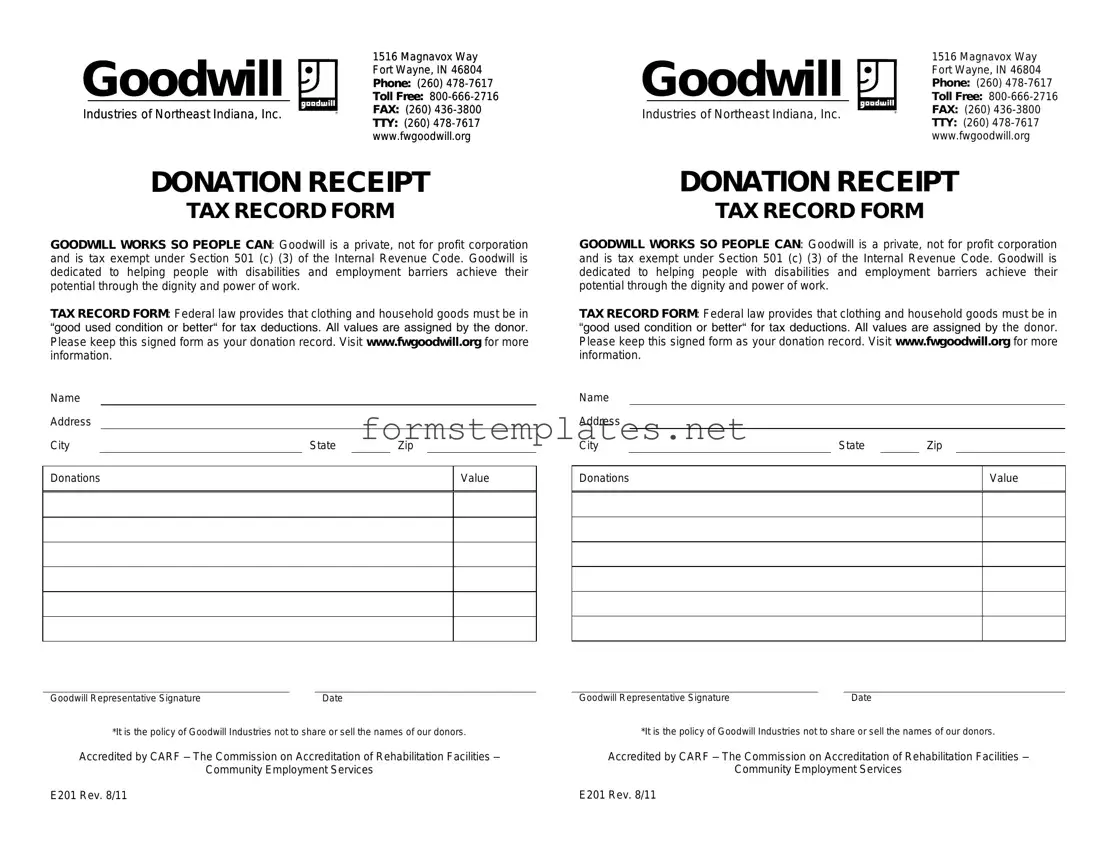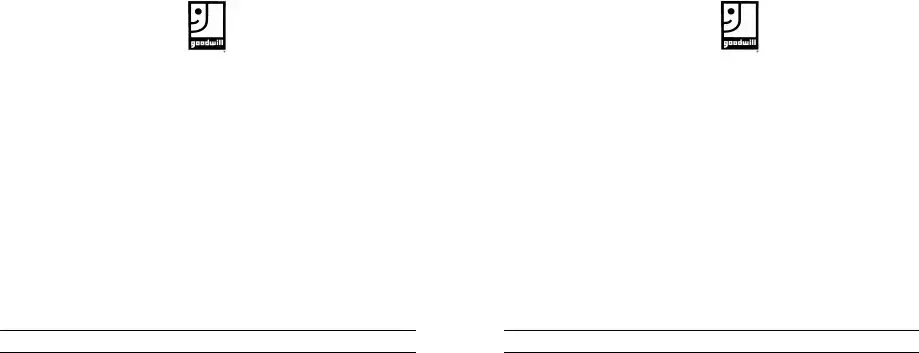When individuals decide to donate items to Goodwill, they not only contribute to a worthy cause but also open the door to potential tax benefits. A key element in this process is the Goodwill donation receipt form, which serves as a crucial record of the transaction. This form typically includes essential details such as the donor's name, the date of the donation, and a description of the items contributed. In addition, it often outlines the estimated value of the donated goods, which is important for tax purposes. While Goodwill provides a general valuation guide, the final determination of worth rests with the donor. This form not only acts as proof of the donation but also ensures that donors can accurately report their charitable contributions when filing taxes. Understanding the significance of this receipt can help individuals maximize their contributions while remaining compliant with IRS regulations.

